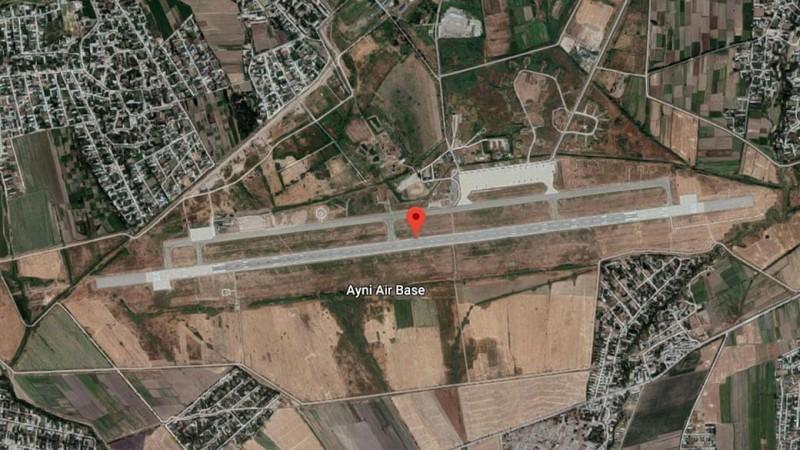
The revelation this week that India fully vacated the Ayni Air Base in Tajikistan three years ago without public announcement, parliamentary scrutiny, or strategic explanation should not be treated as a minor diplomatic footnote. It is, instead, the quiet culmination of a decade-long unraveling of India's most ambitious attempt to transcend its subcontinental geography and establish a durable forward military presence beyond the Indus and the Brahmaputra. Ayni was never merely a runway in Central Asia. It was the physical manifestation of a doctrinal aspiration: that a rising India could secure strategic depth in its extended neighborhood, not through conquest or colonization, but through partnership, investment, and presence. That aspiration has now been extinguished not by war, but by the slow, corrosive forces of great-power realignment, alliance asymmetry, and, most damningly, India's own absence of strategic coherence.
This is not a story of tactical misjudgment. It is a profound strategic failure, one that demands a reckoning with the structural weaknesses in India's national security architecture. For if Ayni the Indian Air Force's first and only dedicated overseas air facility could be surrendered without a fight, what does that portend for the broader project of Indian power in the 21st century?
The Architecture of Ambition
To understand the magnitude of the loss, one must first reconstruct the vision that animated Ayni's creation. In the early 2000s, as India emerged from the shadow of the 1998 nuclear tests and the 1999 Kargil War, a small circle of strategic planners in South Block and the Ministry of Defence began to articulate a new grammar of power. The old Nehruvian paradigm continental defensiveness, non-alignment as moral posture, and a reflexive aversion to military entanglement abroad had been rendered obsolete by the twin realities of Pakistan's deepening militarization of jihad and China's accelerating encirclement of the subcontinent.
Ayni emerged from this crucible. Located just 15 kilometers west of Dushanbe and a mere 20 kilometers from the narrow Wakhan Corridor that separates Tajikistan from Pakistan-occupied Kashmir, the base offered India a geographical miracle: a northern gateway into Afghanistan that bypassed Pakistani airspace entirely. Between 2002 and 2010, India invested over $70 million to transform a modest Soviet-era facility into a modern air hub extending the runway to 3,200 meters, constructing hardened aircraft shelters, installing advanced air-traffic control systems, and building fuel depots capable of sustaining sustained operations. By 2010, when the base was formally inaugurated, it could accommodate Su-30MKI fighters, Mi-17 helicopters, and, in extremis, serve as a staging point for rapid intervention in Afghanistan or surveillance over Pakistan's northwestern frontier.
This was no mere logistics node. It was the northern anchor of an emerging Indian strategic triangle: Duqm and Chabahar in the west, the Andaman and Nicobar Islands in the east, and Ayni in the north. Together, these points were meant to create a three-dimensional security perimeter maritime, continental, and aerial that would allow India to shape events in its extended neighborhood rather than merely react to them. Ayni, in particular, was designed to serve multiple functions: humanitarian evacuation (as demonstrated in 2021), counter-terrorism staging, disaster relief, and, most crucially, strategic signaling to both Pakistan and China that India's reach extended far beyond the Himalayas.
The Slow Unraveling
The base's evacuation in 2022 was not a sudden rupture but the predictable endpoint of a long degenerative process. Four interlocking forces converged to render Ayni untenable.
First, and most decisively, was the convergence of great-power vetoes. Russia and China, bound by their "no-limits" partnership formalized in February 2022, share a common interest in excluding extra-regional military powers from their respective spheres. For Moscow, Central Asia remains the innermost circle of its security perimeter; the Collective Security Treaty Organization (CSTO) is not merely a defense pact but a doctrinal assertion of exclusivity. India's presence at Ayni, however benignly framed, violated this principle. China, meanwhile, has invested over $1.2 billion in Tajikistan since 2015 constructing highways through the Pamirs, financing hydroelectric dams, and quietly establishing a military outpost near the Wakhan Corridor. Beijing's discomfort with an Indian air base 400 kilometers from its western frontier was palpable. Tajikistan, a small state caught between two giants, had little choice but to prioritize its existential dependencies.
Second was the structural fragility of the bilateral framework. The 2002 India-Tajikistan agreement was a development compact, not a basing treaty. It granted India rights to upgrade and jointly operate the facility for a fixed term, but it contained no automatic renewal clause, no security guarantees, and no mechanism for dispute resolution. When the lease expired in 2021, India proposed permanent Su-30MKI deployments to justify continued presence a proposal that Dushanbe, under pressure from Moscow and Beijing, politely but firmly rejected. India had built the runway, but it had never secured the political foundation beneath it.
Third was the strategic obsolescence triggered by the Taliban's return to power in August 2021. Ayni's original rationale supporting the Northern Alliance, enabling rapid intervention against Pakistan-backed proxies, and maintaining a logistics pipeline into a friendly Afghanistan collapsed overnight. The base became a strategic orphan, sustained only by bureaucratic momentum and the sunk-cost fallacy.
Finally, and most corrosively, was India's own doctrinal vacuum. There is no publicly articulated Indian National Security Strategy, no overseas basing doctrine, no parliamentary mechanism for oversight of strategic investments. The $70 million spent on Ayni was never debated in Parliament. Its evacuation was never explained to the public. This is not strategic discretion; it is strategic illiteracy. Without a shared national framework for understanding the purpose of forward presence, India cannot sustain the political will to defend it.
The Decade of Concessions
Ayni is not an isolated failure. It is the capstone of a broader pattern of strategic retraction that has unfolded across multiple theaters since 2014. Each concession has followed a similar script: initial investment, gradual encroachment by a more assertive rival, and eventual withdrawal under the guise of de-escalation or partnership.In Myanmar, India lost de facto control of forward listening posts in Rakhine State as China's Corridor for Economic Cooperation advanced. In Bhutan, the 2017 Doklam standoff and subsequent disengagement agreements allowed China to consolidate villages in disputed territory, eroding India's dominance over the tri-junction. In Afghanistan, the closure of the Kandahar consulate and the evaporation of $3 billion in reconstruction aid left India with no enduring access. In Ladakh, buffer-zone withdrawals after the 2020 Galwan clash ceded over 1,000 square kilometers of patrol dominance. In Sri Lanka, the Trincomalee oil tank farm project once heralded as a strategic counterweight to Hambantota remains mired in delays amid Colombo's debt-driven tilt toward Beijing. And in the May 2025 India-Pakistan conflict, the absence of Ayni forced the Indian Air Force to operate from vulnerable forward bases in Punjab and Rajasthan, absorbing damage that might have been avoided with a northern diversionary vector.
The aggregate cost of these retreats exceeds $5 billion in direct investment, but the strategic price is incalculable: a compressed security perimeter, a diminished deterrent posture, and a perception of retrenchment that emboldens adversaries.
The Deeper Malady
At root, India's serial losses stem from three structural pathologies.
The first is the soft-power illusion the belief that development assistance can substitute for hard security commitments. India builds hospitals, roads, and parliaments, but it rarely secures the political compacts that transform aid into access. China, by contrast, uses debt not as charity but as leverage.
The second is the autonomy paradox. India's vaunted strategic autonomy has devolved into strategic isolation. By refusing to prioritize between the Quad and the Russia-India-China trilateral, India ends up marginalized in both. It is neither a full security partner of the West nor a trusted interlocutor of the East.
The third is the democracy deficit. No democracy can sustain a forward strategy without public consent. Yet India's strategic elite operates in a hermetically sealed ecosystem. There are no white papers, no annual defense postures, no independent audits of strategic investments.
The result is a national security conversation that occurs in whispers, not in the public square.
Toward a New Strategic Grammar
India stands at a civilizational inflection point. It can continue its quiet retreat, ceding the periphery to more cohesive rivals, or it can author a new doctrine of presence that is resilient, redundant, and politically sustainable. The path forward requires a fundamental restructuring of how India thinks about power.
First, India must publish a National Security Strategy not as a public relations exercise, but as a living document that articulates the purpose of forward presence, defines red lines for access, and establishes metrics for success. This strategy must include a dedicated chapter on overseas contingency posture, clarifying the conditions under which India will invest in, defend, or withdraw from foreign facilities.
Second, India must diversify its footprint beyond single-site dependencies. The Ayni model pouring resources into one vulnerable node is obsolete. Instead, India should pursue a networked micro-basing architecture: contingency access agreements with Armenia (for the Caucasus), rotational air exercises in Mongolia, logistics hubs in Vietnam's Cam Ranh Bay, and permanent facilities in Oman's Duqm. These nodes need not be large, but they must be redundant, resilient, and politically insulated.
Third, India must leverage digital offsets to reduce its dependence on physical real estate. A $10 billion investment over five years in space-based intelligence, surveillance, and reconnaissance coupled with autonomous systems and hypersonic standoff weapons could deliver persistent coverage of Central Asia and the Indian Ocean Rim that no single air base could match. The future of power projection is not in runways but in orbits.
Fourth, India must weaponize its economic statecraft. Rather than offering aid as charity, India should pioneer debt-for-access swaps restructuring the obligations of partners like Tajikistan, the Maldives, or Mongolia in exchange for contingency rights. This is not neo-colonialism; it is the normalization of great-power practice.
Finally, India must democratize its strategic culture. A parliamentary standing committee on strategic investments, mandatory annual reporting on overseas assets, and regular public post-mortems of failures (Ayni, Galwan, Doklam) are not luxuries they are necessities. Only a nation that debates its security can sustain it.
The Choice
The evacuation of Ayni is not a tragedy. It is a mirror.
It reflects a India that builds monuments to ambition but lacks the doctrinal scaffolding to defend them.
It reflects a India that confuses presence with power, assistance with alliance, and autonomy with agency.
The question now is whether India will learn from the mirror or shatter it.
Great powers do not lose bases because they are defeated in battle. They lose them because they fail to imagine the conditions under which they must be defended.
India must now choose: to remain a continental power with oceanic pretensions, or to become a networked maritime-continental power with the will, the doctrine, and the resilience to shape the Indo-Pacific century.
The runway at Ayni is gone.
The opportunity to build something greater is not.
[Major General Dr. Dilawar Singh, IAV, is a distinguished strategist having held senior positions in technology, defence, and corporate governance. He serves on global boards and advises on leadership, emerging technologies, and strategic affairs, with a focus on aligning India's interests in the evolving global technological order.]
















